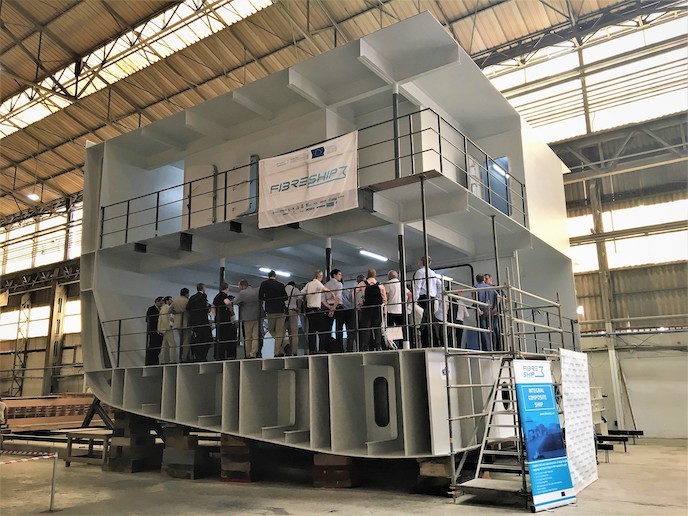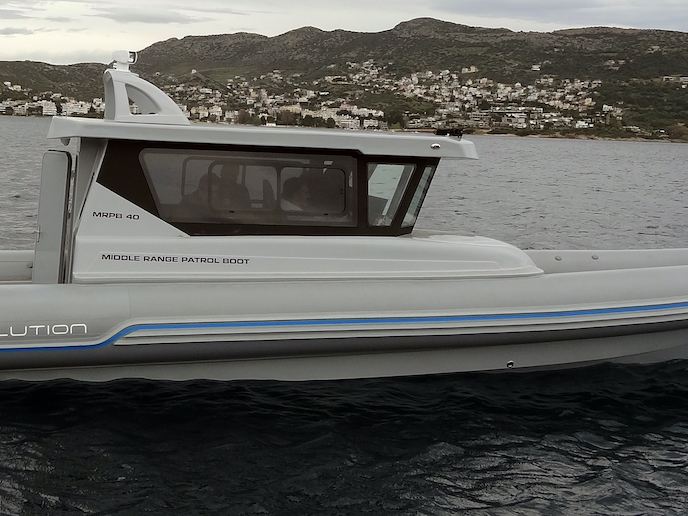Composite materials herald the next generation of lightweight large-scale ships
Fibre-reinforced polymers (FRPs) offer multiple advantages to those involved in large ship construction. Being light, they reduce the weight of ships and so the power required, resulting in operational savings. FRP materials do not suffer from corrosion, therefore reducing maintenance costs. Compared to steel-based ship production, they generate fewer polluting emissions and while in service create less underwater noise, benefitting marine life. To demonstrate the viability of using FRP for shipbuilding, the EU-supported FIBRESHIP project designed three vessels: a 265-metre containership, a 204-metre roll-on/roll-off passenger (ROPAX) vessel, and an 85-metre fishing research vessel (FRV). These three categories of vessel were selected to demonstrate not only a range of market applications, but also structural configurations. Compared to steel-based conventional ships, all three vessel designs were shown in simulations to achieve a significant structural weight reduction: 45.9 % for the containership, 36.2 % for the ROPAX and 69.6 % for the FRV. An 11 x 11 x 8.6 metre demonstrator, weighing 20 tonnes, was built for a section of an 85-metre FRV. A test was performed on a structural FIBRESHIP-based bulkhead which surpassed the strict IMO FTP Code Part 11 on fire safety requirements. The material was resistant to fire for 83 minutes, exceeding the required time by 23 minutes. “Despite some fire safety features, which need to be improved, and regulatory challenges to be overcome, FIBRESHIP shows it will soon be feasible to construct large-scale, sustainable ships using FRP materials,” says project coordinator Alfonso Jurado, from TSI, the project host.
Support tools
FIBRESHIP’s vessel designs will be equipped with structural health monitoring systems to evaluate their hull-girder condition. To demonstrate this concept, an array of sensors was fitted to monitor the structural behaviour of a steel-based 260-metre containership, ZIM Luanda, and can be extrapolated to long-length fibre-based vessels. “We monitored local deformations and general torsional and bending deformations of the hull-girder in real time, as the vessel travelled from Spain to Canada,” explains Jurado. To ensure safety and reliability, FIBRESHIP developed a series of software analysis tools. These checked issues such as fire resistance, thermal degradation, structural health, fatigue loads, dynamic structural behaviour and hydrodynamic performance. Underwater noise levels were also calculated, showing that the acoustic signature emitted by the fibre-based FRV was well below the maximum levels recommended by regulations. The team created inspection and maintenance procedures for FRP-based ships to detect and control defects such as delamination failures in FRP bulkheads. “We also developed a decision support tool which showed that FRP materials offer superior performance while costing less and needing less energy over their lifespan. Additionally, we created a cost-benefit calculator to estimate the cost of the building, operating and dismantling phases,” notes Jurado.
Revolutionising European shipbuilding
The versatility of FRP manufacturing enables the construction of more complex hull and superstructure geometries. The result can be more attractive than steel versions, an important factor when it comes to passenger transportation and leisure vessels. But it’s not just a question of looks. As the vessels are quieter, they are also more comfortable. To advance the work, the team is now working to reduce building costs and time using modular and automatised manufacturing and assembly techniques. They are also developing recycling and waste management procedures for dismantling. “It is really important that these vessels enter the European circular economy strategy,” adds Jurado.
Keywords
FIBRESHIP, ship, container, vessel, composite, fibre-reinforced polymers, fire resistance, thermal degradation, structural health, fatigue loads, structural behaviour, hydrodynamic performance







